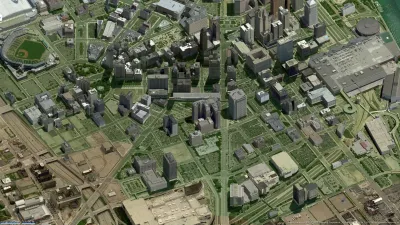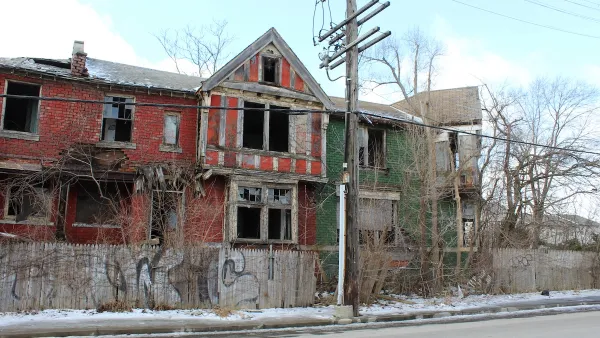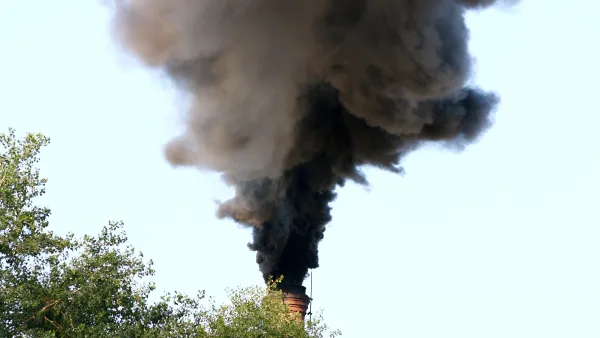One of Detroit’s most defining modern characteristics—and most pressing dilemmas—is its huge amount of neglected and vacant land.

One of Detroit’s most defining modern characteristics—and most pressing dilemmas—is its huge amount of neglected and vacant land. New from editors June Manning Thomas and Henco Bekkering, Mapping Detroit: Land, Community, and Shaping a City uses a variety of maps to shed light on how Detroit moved from frontier fort to thriving industrial metropolis to today's high-vacancy city. With contributors ranging from a map archivist and a historian to architects, urban designers, and urban planners, Mapping Detroit brings a unique perspective to the historical causes, contemporary effects, and potential future of Detroit's transformed landscape.
To show how Detroit arrived in its present condition, contributors begin by tracing the city’s beginnings as an agricultural, military, and trade outpost and map both its depopulation and attempts at redevelopment. They move on to discuss particular land-related systems and neighborhood characteristics that encouraged modern social and economic changes and offer case studies of two city neighborhoods—the Brightmoor area and Southwest Detroit. Contributors also consider both the city's ecological assets and its sociological fragmentation to add dimension to the current understanding of its emptiness. The volume's epilogue offers a synopsis of the major points of the 2012 Detroit Future City report, the city's own strategic blueprint for future land use. Containing some of the leading voices on Detroit’s history and future, Mapping Detroit will be informative reading for anyone interested in urban studies, geography, and recent American history.
- María Arquero de Alarcón, Taubman College assistant professor of architecture and urban planning and design
- Henco Bekkering (co-editor), Delft University of Technology professor emeritus of urban design at the School of Architecture
- Robert Fishman, Taubman College professor in architecture and urban planning
- Lars Graebner, Taubman College assistant professor of practice in architecture
- Joe Grengs, Taubman College associate professor of urban planning
- June Thomas (co-editor), Ph.D., FAICP, Taubman College centennial professor of urban planning
FULL STORY: Wayne State University Press

Analysis: Cybertruck Fatality Rate Far Exceeds That of Ford Pinto
The Tesla Cybertruck was recalled seven times last year.

National Parks Layoffs Will Cause Communities to Lose Billions
Thousands of essential park workers were laid off this week, just before the busy spring break season.

Retro-silient?: America’s First “Eco-burb,” The Woodlands Turns 50
A master-planned community north of Houston offers lessons on green infrastructure and resilient design, but falls short of its founder’s lofty affordability and walkability goals.

Test News Post 1
This is a summary

Analysis: Cybertruck Fatality Rate Far Exceeds That of Ford Pinto
The Tesla Cybertruck was recalled seven times last year.

Test News Headline 46
Test for the image on the front page.
Urban Design for Planners 1: Software Tools
This six-course series explores essential urban design concepts using open source software and equips planners with the tools they need to participate fully in the urban design process.
Planning for Universal Design
Learn the tools for implementing Universal Design in planning regulations.
EMC Planning Group, Inc.
Planetizen
Planetizen
Mpact (formerly Rail~Volution)
Great Falls Development Authority, Inc.
HUDs Office of Policy Development and Research
NYU Wagner Graduate School of Public Service




























